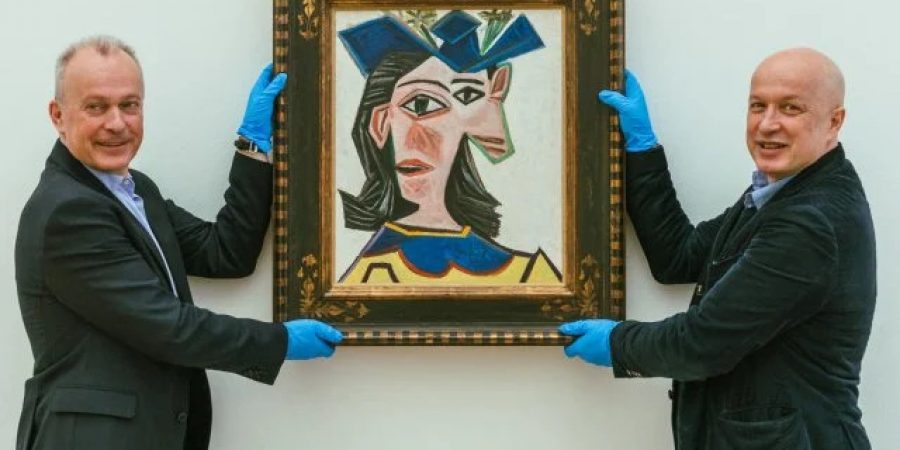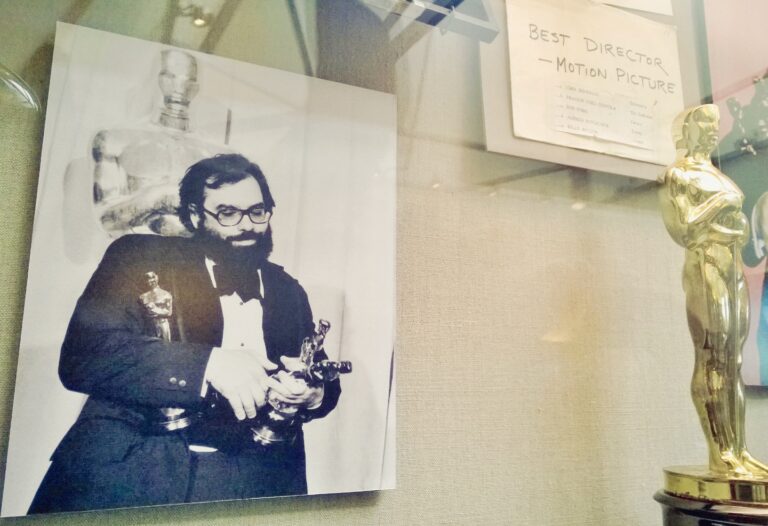There are several reasons collectors might loan a work of art to a cultural institution. They may wish to share a cherished pieced with the public who would otherwise not have an opportunity to view it. Museum exhibition can enhance the provenance and value of privately owned work. Likewise, a museum may provide scholarly details about a collection. Often, collections or pieces are exhibited to gain a bit of notoriety and therefore add value before a sale. Increasingly, works are being exhibited to reap significant tax savings.
As example, Elaine Wynn, the ex-wife of Las Vegas casino owner Stephen A. Wynn purchased Three Studies of Lucian Freud (1969) by Francis Bacon $142.4 million at auction in New York. Although Ms. Wynn is a resident of Nevada, the piece made a surprising post-auction debut at the Portland Art Museum in Oregon. Why? In doing so, the Wynn estate avoided nearly $11M in use taxes that Nevada would have levied.
Usually, artwork is subject to a use tax in the state where it arrives after it is shipped from its purchase location, but five states—Alaska, Delaware, Montana, New Hampshire, and Oregon—do not have a use tax. After a term of exhibition in one of these states, it can be shipped home free from tax as it has already been “used” in another state. This clever tactic allows art buyers, who sometimes pay tens of millions for artwork, to relocate the artwork to their private residence tax-free.
Whatever the reason your Principal may choose to loan a priceless work to a museum, as part of your due diligence as the Estate Manager, you should research and collect information on the transaction and create a detailed records file of the transaction. Our art consultant recommends the following checklist:
1) Museum Accreditation Standards Be sure you are lending to a reputable, vetted, fully insured museum with a good reputation for art management. Also check that the museum is in good financial health and that staff turnover is minimal. A good resource is The American Alliance of Museums http://www.aam-us.org/resources/assessment-programs/accreditation
2) Fine Art Insurance The borrowing museum is responsible for all aspects of the loan and associated costs, including insurance. The museum should provide you with “wall-to-wall” insurance from the time the work is taken from their “wall,” during transit, throughout the exhibition, and until the work is returned to you. Ask your insurance agent to review the museum’s insurance policy to evaluate the financial strength of the insurance carrier to determine whether you should maintain your own insurance, in addition to the museum policy. You should also make sure that your principal is named as the loss payee in any sort of damage.
3) Appraisal You should have a current, independent appraisal to establish the proper value of the work at the time of the loan. The appraisal should reflect a current market value for the artworks and account for the risk attached to loans and the impossibility of replacing an artwork. This also informs the kind of coverage you secure for the works during and after the loan. Your insurer may be able to assist you in identifying a relevant and qualified appraiser.
4) Title and Authenticity / Seizure If there are any concerns regarding authenticity or clear title to the fine art being loaned out, recommend that you consult with a provenance researcher. You’ll want to make sure that the art cannot be brought to the court of law for any reason. This could happen for something as simple as an ownership dispute, but more often happens when a piece is recognized as having been stolen or appropriated.
The United States’ Statute 22 protects objects that are culturally significant or of national interest from governmental seizure. Any non-profit museum, cultural, or educational institution may apply to the U.S. Department of state to determine if the artwork or object is protected under Statute 22. This will immunize the object from the judicial process.
If you are loaning your artwork abroad, be sure it is protected under a similar clause. That way it cannot be seized regarding any confusion over its authenticity, owner, or other concerns.
5) Packing and Shipping Consult a conservator for packing and shipping protocols for your specific type of artwork. “It helps to know every good conservator in a market,” says Derek Smith, President of AXIS Fine Art Installation. They have experience in shipping and restoration, meaning they know how to prevent the damage of a piece. “It can’t be brought back to it’s former glory,” Smith admits, so you must do your best to protect your collection.
A condition report of each piece is a must before any of your art goes into transit. This way you are protected upon any new damage. Although that means you will be reimbursed for any accidents, it’s best to avoid this situation altogether. Obtain details about each leg of the trip and request a courier to accompany fragile items while in transit.
6) Museum Security Request a facility report from the museum registrar to evaluate the security and protection at the museum or any storage facility or venue where the work will be shown. Ask about security cases, security screws, location of the objects in relationship to visitor flow, and distance from the viewing public. Inquire about the presence of guards, alarms, and historic police response as needed.
7) Display Conditions As many pieces of fine art are susceptible to damage from light, humidity, and other environmental factors, inquire about climate controls and fire prevention methods. Request special display cases and/ or specify display location for protection from the climate factors, fire suppression systems, or public as required.
8) Labeling and Identification Be sure that the works are clearly marked with irremovable identifiers that you do not share with any third party, including the museum or borrower. These may include infrared mapping, digital identifiers, and hyperspectral imaging. These identifiers would be in addition to traditional labels on the back of the work and any plaque or frame markings.
9) Loan Agreement The loan agreement is your contract, naming the owner of the art and specifying the details of the loan. This is where the terms are outlines, including the dates you agree to loan out the work, the location (i.e. the borrower), the title(s), and the specific exhibit, if relevant.
It is the owner’s responsibility and prerogative to outline any specific requests and requirements in the loan agreement. For instance, whether you want your name to be displayed with the piece or where you would like to see it in the museum, or that no repairs, restoration or alteration of the artworks is permitted without the express written authorization of the Lender.
You’ll also want the most recent appraisal values and condition reports in the loan agreement. This will ensure you are compensated in the case of damage or theft. The loan insurance, usually provided by the museum, will also be outlined in the loan agreement.
10) Documentation As a last note, be sure to have all of your paperwork in order, with multiple copies distributed to the necessary parties. Be sure to photograph, in high quality detail, every inch of the work and its frame including whole images and quadrant details, front and back. Make note of pre-existing issues or flaws and identifying marks.
Your Principal may be considering anonymous acknowledgment of the loan versus attribution of ownership. In that case, it’s best to set up an LLC for the work and register all of the documentation to the LLC. Be sure all of the paperwork is congruent and lists one clear owner. Consult with your security team and insurance advisor.



